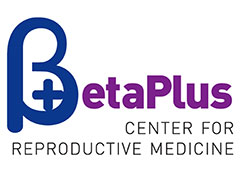2021 was a very successful year for our Clinic. We celebrated the 10th anniversary of the Clinic at the beginning of the year, and we ended the year with the highest number of ART procedures and the highest number of pregnancies, in total 102 deliveries and 113 babies! We are extremely proud of it, and we hope the growing trend of BetaPlus babies number will continue in 2022.
In our jubilee year, we started 588 ART procedures of those 334 IVF/ICSI, 166 FET, and 86 AIH procedures.
OF the 588 started cycles, there were 210 positive pregnancy tests, which gives a success rate of 35.7% for any cycle (IVF+FET+AIH) started in the Clinic. The age of women in the MPO procedures was from 23 – 47 years. The youngest patient that achieved pregnancy had 24 years, and the oldest was 44.
IVF/ICSI
In total 334 fresh IVF/ICSI cycles were started. Before aspiration, 13 cycles were terminated, in 10 women the reason for other terminations was a low response to stimulation, while in 3 women the reason was a positive COVID test.
Embryo transfer was not performed in 49 patients. In 13 women we decided on the “freeze all” procedure mostly due to the prevention of ovarian hyperstimulation syndrome (OHSS). In 9 patients, there were no oocytes obtained during aspiration. In 25 patients the oocyte was obtained, however without fertilization, the quality of collected oocytes was inadequate for fertilization, or there was fertilization, but the embryo did not develop. In two patients from a fresh cycle, embryo transfer was not performed because passing through the cervical canal was difficult, hence the embryos were cryopreserved.
In fresh cycles, there were 272 embryo transfers in total. Of those, 47 cycles (17.3%) had blastocyst transferred, and in the rest, we transferred embryos at 2 to 4 days old. In 122 cycles (44.8%) single embryo transfer was performed, in 130 (47.8%) two embryos, and three embryos were transferred in 21 cycles (7.7%). None of the patients had multiple pregnancy with triples. In one only one cycle with three embryos transferred, pregnancy was achieved, and it was normal singleton pregnancy.
In fresh IVF/ICSI cycles, 100 pregnancies were achieved, which gives a success rate of 36.8% by fresh embryo transfer. There were in total seven twin pregnancies, after 130 transfers of 2 embryos (5.4%).
Of 325 cycles started for IVF/ICSI procedure, in 264 cycles standard ovarian stimulation protocol was used (full stimulation), in 55 cycles we used mild ovarian stimulation protocol, while in 15 patients IVF/ICSI was performed in the natural cycle.
Frozen embryo transfer (FET)
In 2021, 166 frozen embryo transfers (FET) were performed. Since we mostly cryopreserve embryos on day 5, in 161 FET procedures we transferred blastocyst, and day 3-4 embryos in 5 cycles. We had pregnancies after 90 FET procedures, which gives a success rate of 54.2% per transfer. We did most of the cryo embryo transfers (83.1%) in stimulated cycles, because the risk of giving up the procedure was lower, usually with estrogens and gestagens. The pregnancy was achieved in 69 cryo embryo transfers after one blastocyst transfer, and in 21 FET procedures after two blastocysts were transferred. There were in total two twin pregnancies from the transfer of two blastocysts. In one case we transferred 3 embryos, but the pregnancy was not achieved.
Insemination (AIH)
In 2021, 86 inseminations were performed, of those nine inseminations natural cycle. Most of the inseminations were performed in stimulated cycles because the most common indication for insemination was anovulation. The positive pregnancy test was achieved in 20 cycles, which gives a success rate of 23.2% by cycle. Pregnancy was achieved in women aged 24-37.
Twin pregnancies
Our goal is still to lower the rate of twin pregnancies. In 2021, there were ten twin pregnancies in total, which is 4.8% of the total number of pregnancies. Seven pregnancies were achieved in the fresh IVF/ICSI cycle, two after the cryo-embryo transfer, and one from insemination. We also had less than 5% of twin pregnancies in previous years, we are satisfied with this result since our primary goal is successful pregnancy with minimal risks for the mother and the baby.




